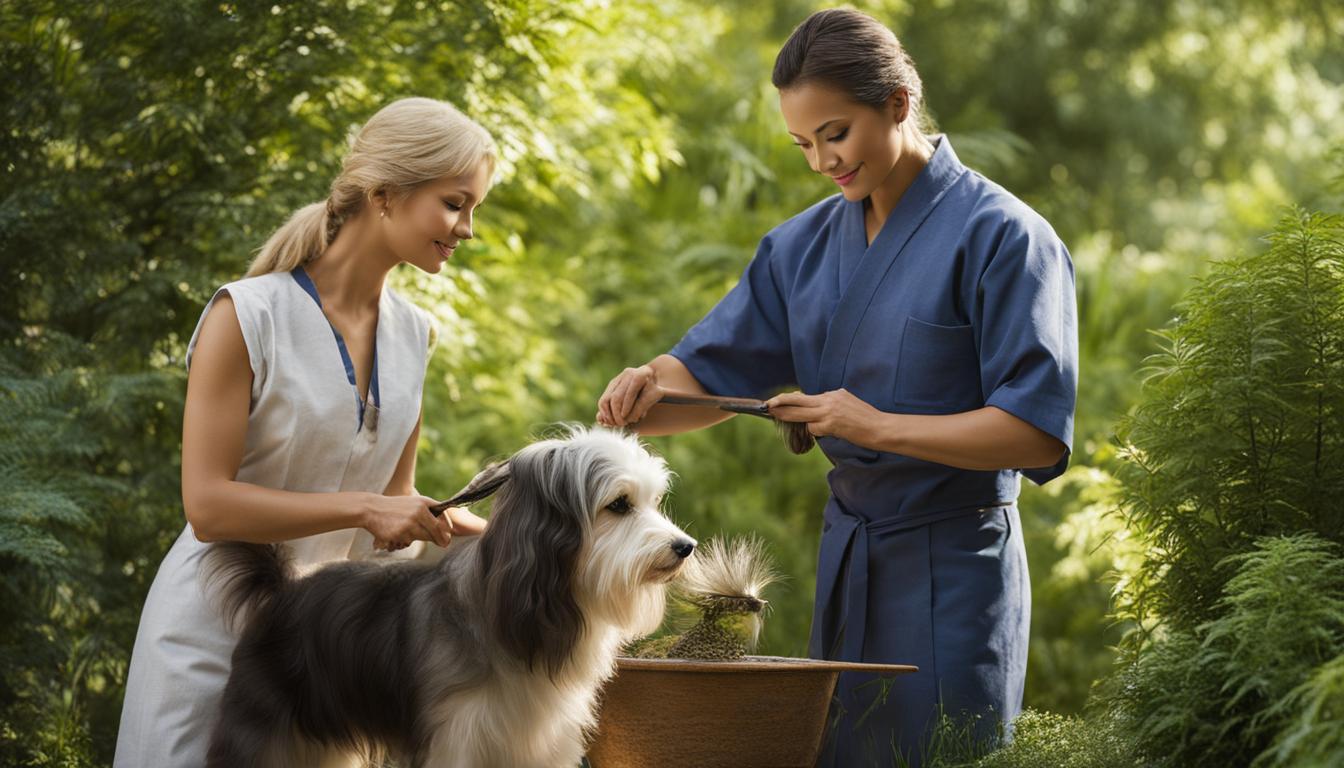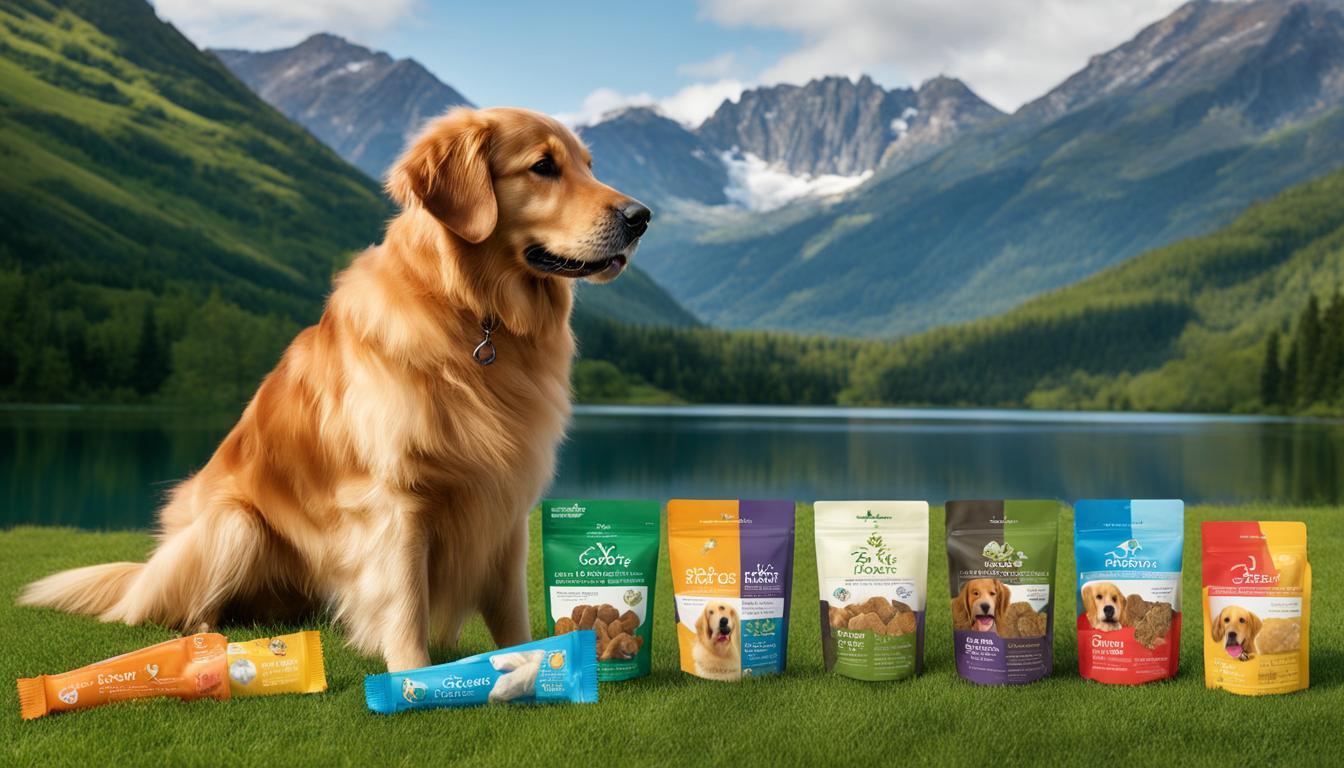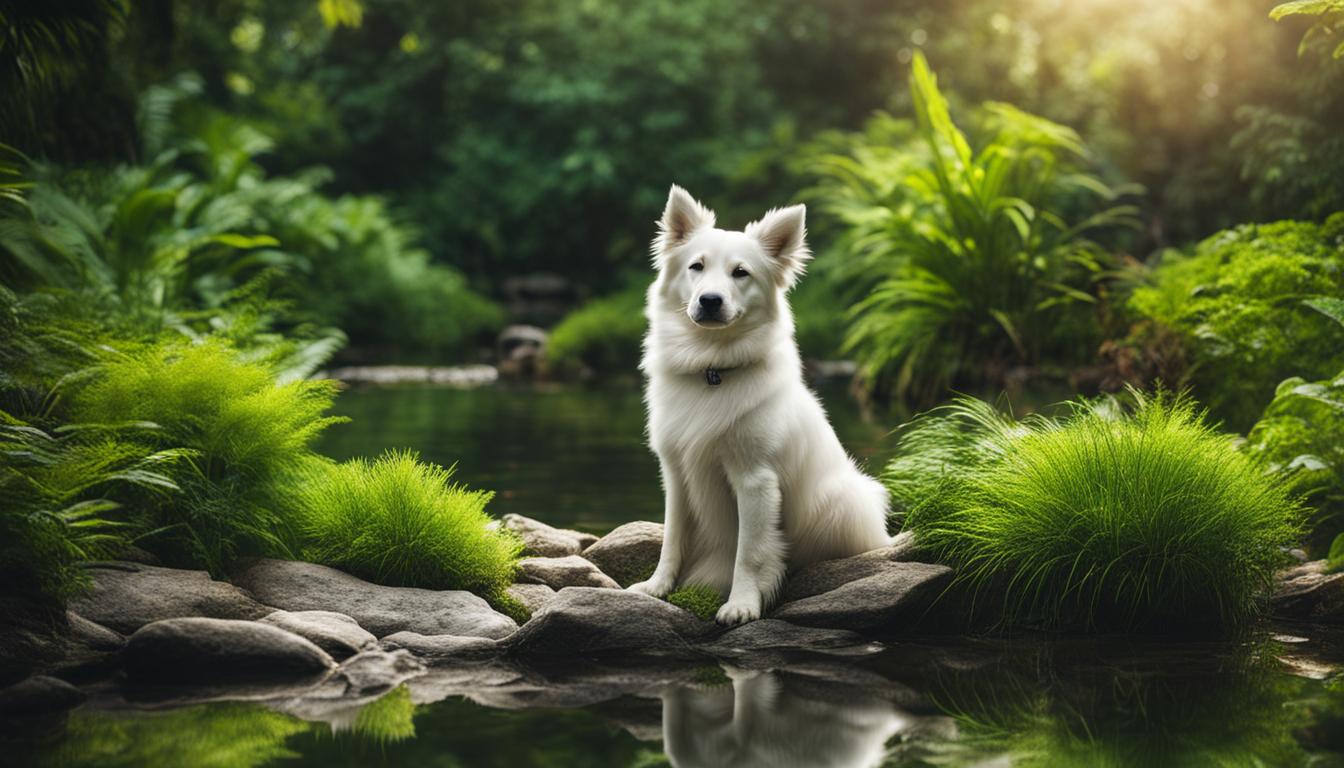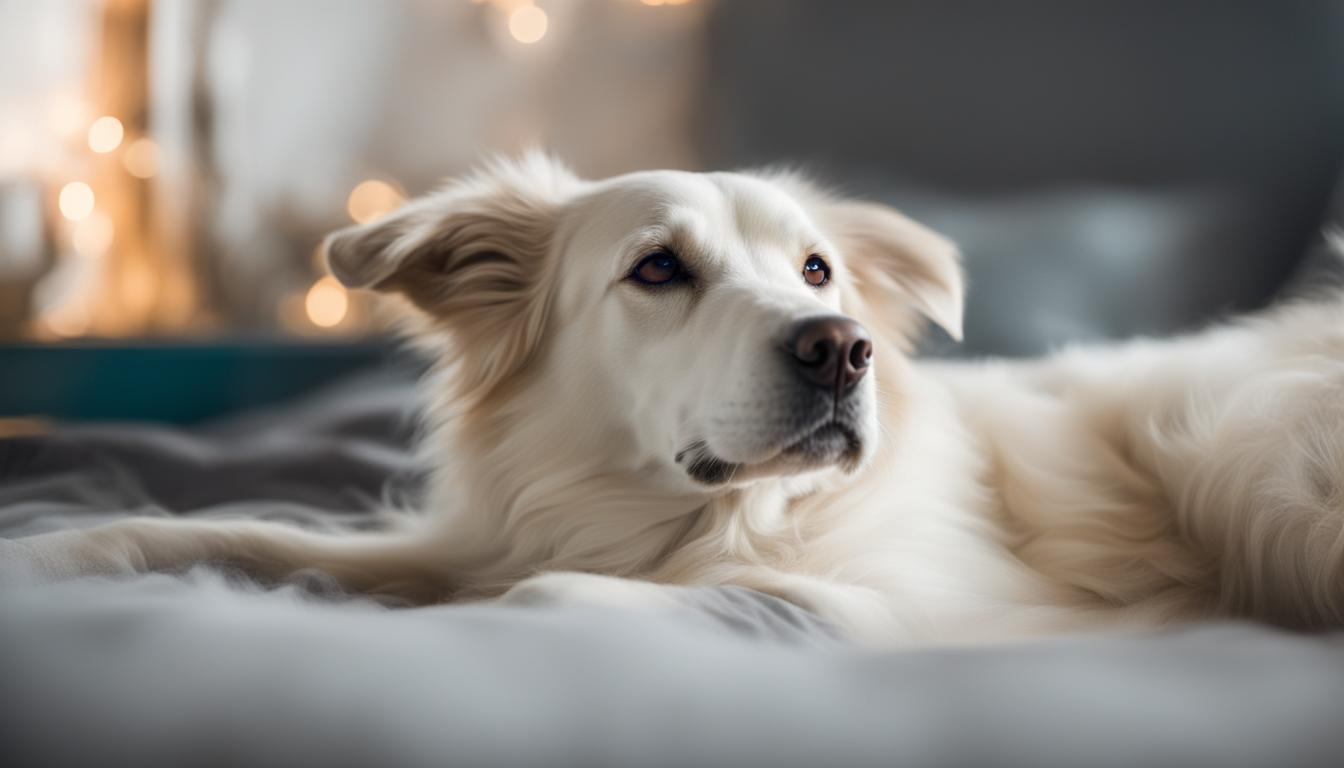Welcome to the fascinating world of dog grooming history! In this comprehensive guide, we will take you on a journey through time to explore the ancient techniques and rich traditions that have shaped the art of dog grooming. From the early days of our relationship with proto-wolf/dogs to the modern era of professional grooming, we will uncover the captivating stories and insights that make dog grooming more than just a mundane task.
So, fasten your seatbelt and get ready to delve into the captivating history of dog grooming. Let’s uncover the secrets of dog grooming’s past and discover how it has evolved into the thriving profession we know today.
Key Takeaways:
- Dog grooming has a rich history that dates back thousands of years.
- The close relationship between early humans and proto-wolf/dogs likely led to the practice of grooming.
- Grooming evolved from a practical necessity to an art form throughout history.
- The professionalization of dog grooming began in the Middle Ages with the employment of full-time groomers.
- The role of dog grooming in society has evolved from functionality to a means of expressing love and care for our canine companions.
The Evolution of Dog Grooming Techniques
As our bond with dogs developed over time, so did the techniques and rituals surrounding dog grooming. Traditional dog grooming methods have evolved to meet the changing needs and preferences of different eras and cultures. Initially, grooming focused on practicality, ensuring the health and functionality of dogs. However, as grooming became an art form, aesthetic considerations also came into play.
“Dog grooming techniques have come a long way from their practical origins, with grooming tools evolving to meet modern standards of style and sophistication.”
Cultures and time periods have embraced their own unique grooming practices. For example, the Continental Cut of the Poodle, with its shaved legs and decorative accents, had both practical and stylistic origins. Throughout history, grooming tools like brushes, combs, scissors, and clippers have also advanced to cater to the demands of modern grooming standards.
“The evolution of dog grooming techniques reflects the shifting attitudes towards dogs as companions, as well as the artistic expression and cultural influences of different eras.”
| Traditional Dog Grooming Techniques | Modern Dog Grooming Techniques |
|---|---|
| Focus on practicality and maintaining functionality | Emphasis on style and aesthetics |
| Simple grooming tools like brushes and combs | Advanced grooming tools like clippers and specialized products |
| Basic trimming and hygiene care | Detailed coat shaping and creative styling |
| Primarily for working and utilitarian purposes | Both for functional and cosmetic reasons |
From ancient times to the present day, dog grooming techniques continue to evolve, influenced by cultural, societal, and aesthetic factors. The ever-changing nature of grooming ensures that this art form remains vibrant and relevant in our modern world.

The Professionalization of Dog Grooming
Early dog grooming was a practical necessity, with simple tools used to maintain the health and functionality of dogs. However, as the demand for dogs as working companions and pets grew, the need for professional groomers arose. In the Middle Ages, kennel boys were employed on feudal estates to care for and groom dogs, making them the earliest known professional groomers. These early groomers had basic tools such as brushes and combs to maintain the hunting and herding stock.
As societies evolved, grooming became more than just a functional task. It transformed into an art form, with aesthetic considerations coming into play. The profession began to formalize in the 20th century, with the establishment of vocational grooming schools in the 1960s. These schools provided aspiring groomers with formal education and training, equipping them with the skills necessary to meet the growing demand for professional pet grooming.
Early leaders in the industry, such as Sam Kohl and John Nash, played a crucial role in establishing grooming as a respected profession. They contributed to the organization of the pet grooming industry, creating certifications and standards for groomers. Conferences, competitions, and publications like Barkleigh Productions further helped groomers stay connected and up-to-date with industry trends and advancements.
| Early Dog Grooming Tools | Early Professional Dog Groomers | Professional Pet Grooming |
|---|---|---|
| Brushes | Kennel Boys | Vocational grooming schools |
| Combs | Basic tools | Certifications and standards |
“Grooming is not just about making dogs look good. It’s about their health, well-being, and overall happiness. The professionalization of dog grooming has elevated it to a respected and skilled profession, ensuring that dogs receive the care they deserve.”
The Future of Professional Pet Grooming
While the pet grooming industry has come a long way, it still faces challenges in terms of regulation and standardization. Efforts are being made to introduce licensing requirements in some states to ensure the safety and quality of grooming services. The future of dog grooming may see increased regulation and a stronger focus on professional standards.
As dog ownership continues to grow, the demand for skilled groomers will only increase. Professional pet grooming offers a promising career choice for individuals with a passion for canine care and aesthetics. With the advancement of grooming tools and techniques, as well as comprehensive training programs, groomers can continue to provide top-notch grooming services to their clients.”
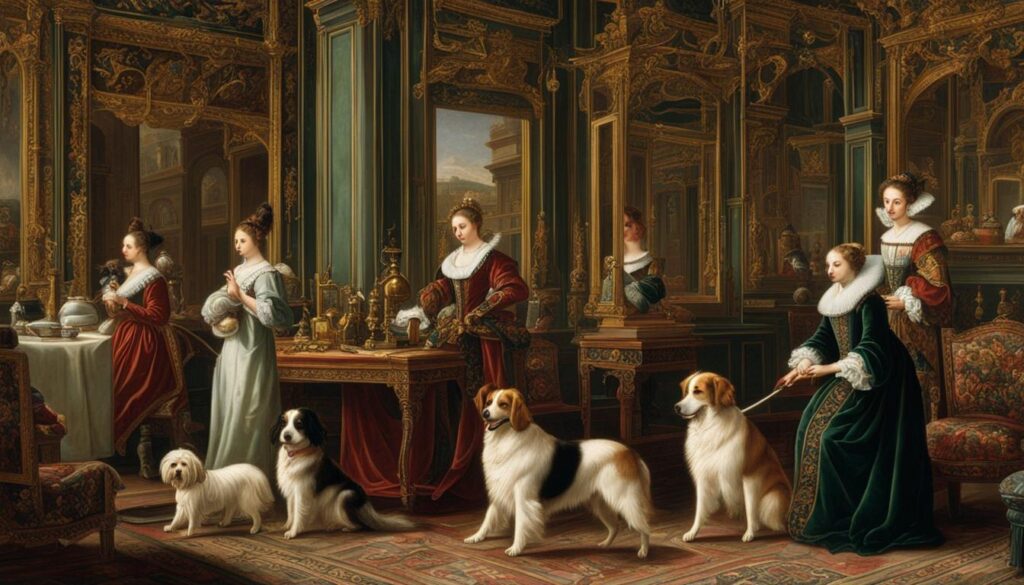
Throughout history, dog grooming has played a significant role in society. In ancient times, grooming was primarily focused on maintaining the health and functionality of dogs. Dogs were valued for their economic contributions, such as hunting, herding, and vermin control. As societies evolved, grooming practices also changed. The emergence of pet dogs in the Middle Ages introduced grooming as a way to showcase wealth and social status. Over time, grooming became an essential part of pet care and a means of expressing love and care for our canine companions. Different eras and cultures have had their own unique grooming traditions and rituals, reflecting the values and aesthetics of the time.
Grooming has not only served practical purposes but has also been deeply intertwined with human emotions and relationships. Dogs have long been considered beloved companions and members of the family, and grooming has been a way for humans to demonstrate their care and affection for their canine friends. Through grooming, pet owners can maintain their dogs’ hygiene, manage their coats, and promote overall well-being.
The Evolution of Grooming Styles
One of the fascinating aspects of dog grooming in different eras is the evolution of grooming styles. As societies have changed, grooming techniques and trends have adapted to reflect current tastes and preferences. In some eras, grooming styles have been functional, emphasizing the dogs’ ability to perform specific tasks. In others, grooming has been more about aesthetics, with intricate cuts and elaborate hairstyles.
“Grooming has not only served practical purposes but has also been deeply intertwined with human emotions and relationships.”
For example, during the Renaissance period, dogs with long, flowing coats were highly favored, as they represented the elegance and refinement of the era. In contrast, during the Victorian era, dogs were often groomed in more practical styles, such as shorter cuts, to suit the more active lifestyles of the time. Today, grooming styles continue to evolve, with new trends emerging in response to changing fashion and societal preferences.
| Historical Era | Grooming Style |
|---|---|
| Ancient Times | Functional grooming to maintain health and functionality |
| Middle Ages | Grooming as a symbol of wealth and social status |
| Renaissance | Long, flowing coats for elegance and refinement |
| Victorian Era | Shorter cuts for practicality and active lifestyles |
| Modern Times | Varied grooming styles based on individual preferences |
As we look back on the history of dog grooming, it becomes clear that grooming has always held a special place in society. Whether for functional or aesthetic reasons, grooming has been an integral part of our relationship with dogs, reflecting our changing values and cultural norms throughout the centuries.
Dog Grooming Today: Trends and Training
As the world of dog grooming continues to evolve, there are exciting opportunities for those interested in pursuing a career in this field. Modern dog grooming techniques and trends have elevated the profession to new heights, making it more than just a routine grooming session. With the right training and skills, you can become a professional dog groomer and be part of this thriving industry.
Gaining the necessary skills and knowledge is essential to excel in the field of dog grooming. There are various options available for dog grooming training, ranging from vocational grooming schools to online courses. These training programs cover a wide range of topics, including grooming techniques for different breeds, safety protocols, and handling skills.
Professional dog grooming opportunities are abundant, with a growing demand for skilled groomers. As pet ownership continues to rise, pet parents are seeking groomers who can not only keep their furry friends clean and healthy but also provide them with personalized styling. This presents a great opportunity for groomers to showcase their creativity and fulfill the unique grooming needs of each dog.
In addition to traditional grooming techniques, modern tools and products have revolutionized the industry. From high-quality clippers to specialized shampoos and conditioners, groomers now have access to a wide range of innovative resources. Staying updated with the latest trends and advancements in dog grooming is crucial to providing exceptional services and meeting the expectations of your clients.
Learning Dog Grooming: A Practical Guide
If you’re passionate about dogs and interested in learning the art of dog grooming, there are several resources available to help you acquire the necessary skills. Whether you’re a pet parent looking to groom your own dog, an aspiring professional groomer, or someone already working with dogs in various capacities, a dog grooming course can provide you with the knowledge and confidence to excel in this field.
The International Open Academy’s Dog Grooming course is a comprehensive online training program that covers all aspects of dog grooming. From grooming basics and safety to handling techniques and specific grooming techniques based on breed, this course offers a well-rounded education for dog lovers. You’ll learn about brushing, fur trimming, clipping, and styling, as well as how to recognize and treat common dog disorders.
“The International Open Academy’s Dog Grooming course provides comprehensive training that covers all aspects of dog grooming. It’s suitable for pet parents, aspiring groomers, and anyone working with dogs.”
By completing this course, you’ll gain practical skills and knowledge that can be applied in real-world grooming scenarios. The course is self-paced, allowing you to study at your own convenience, and it offers a certificate upon completion to showcase your expertise. Whether you’re looking to start your own grooming business or simply want to enhance your grooming skills, this course is a valuable resource for dog lovers.
Investing in your education and acquiring professional dog grooming skills can open up a world of opportunities in the pet care industry. With the demand for skilled groomers surpassing the available talent, there’s never been a better time to embark on a journey to become a dog grooming expert. Enroll in the International Open Academy’s Dog Grooming course and take the first step towards a rewarding career in dog grooming.

| Course | Features | Duration | Price |
|---|---|---|---|
| International Open Academy’s Dog Grooming Course | Comprehensive training in grooming basics, safety, handling, and specific techniques. Certificate upon completion. | Self-paced | $99 |
| PetSmart Grooming Academy | In-person training with experienced instructors. Hands-on practice and certification. Job placement opportunities. | 7-12 weeks | $3,750 |
| Groomadog Academy | Online modules covering grooming theory, techniques, and business management. Certificate upon completion. | 6-12 months | $699 |
Conclusion
Your journey through the history and evolution of dog grooming has been both fascinating and enlightening. From the early days when dogs were seen as tools and working partners to the present, where grooming has become an art form, the dog grooming industry has come a long way.
Today, the profession of dog grooming is in high demand, with job opportunities surpassing the number of qualified individuals available. The advancement of grooming tools and techniques has raised the bar for groomers’ abilities, making it a highly skilled profession.
Looking towards the future, the dog grooming industry may see increased regulation and licensing requirements. This will ensure the safety and quality of grooming services, providing peace of mind to pet owners. As dog ownership continues to grow, the need for skilled groomers will only increase, making dog grooming a promising career choice for those who have a passion for canine care and aesthetics.
So, whether you’re considering a career in dog grooming or simply want to groom your own furry friend, the future looks bright. With the right training and dedication, you can be part of this ever-evolving industry and contribute to the well-being and beauty of our canine companions.
FAQ
What is the history of dog grooming?
Dog grooming has a rich history that dates back thousands of years. It began as a way for early humans to bond with and show gratitude to the proto-wolf/dogs that protected them. Dogs were initially seen as unclean but became more valued in society for their economic functionality. The first professional dog groomers appeared in the Middle Ages, caring for and grooming dogs on feudal estates. Grooming evolved into an art form in 16th century France, with Poodles sporting aesthetic haircuts. Grooming continued to develop as dogs became pets, and the profession gained recognition, especially after the advancement of grooming tools in the 20th century.
How have dog grooming techniques evolved?
Dog grooming techniques have evolved over time to suit different eras and cultures. Early grooming focused on practicality, ensuring the dogs’ health and functionality. As grooming became an art form, aesthetic considerations came into play. Different cultures and time periods had their own unique grooming rituals and practices. Grooming tools, such as brushes, combs, scissors, and clippers, have also evolved to meet modern grooming standards.
When did professional dog grooming emerge?
Professional dog grooming emerged in the Middle Ages, where full-time “kennel boys” were employed on feudal estates to care for and groom dogs. These early groomers had grooming tools like brushes and combs to maintain hunting and herding stock. As the demand for dogs as working companions and pets grew, the need for professional groomers increased. Vocational grooming schools started to appear in the 1960s, offering formal education and training. Leaders in the industry played a crucial role in establishing grooming as a respected profession. The industry became organized, creating certifications and standards for groomers.
What role has dog grooming played in society?
In ancient times, grooming focused on maintaining the health and functionality of dogs. Dogs were valued for their economic contributions, such as hunting and herding. Grooming practices changed as societies evolved. The concept of pet dogs in the Middle Ages introduced grooming as a way to showcase wealth and social status. Over time, grooming became an essential part of pet care and a means of expressing love and care for our canine companions. Different eras and cultures had their own unique grooming traditions and rituals, reflecting the values and aesthetics of the time.
What is dog grooming like today?
Today, dog grooming is a highly skilled and in-demand profession. Advancements in grooming tools and techniques have raised the bar for groomers’ abilities. Vocational grooming schools and certifications provide comprehensive training for aspiring groomers. The post-World War II era saw a significant increase in pet ownership, leading to a higher demand for professional groomers. The industry has grown into a well-paying profession that requires skill, talent, and continuous training. Job opportunities for groomers far exceed the number of qualified individuals available.
How can I learn dog grooming?
If you’re interested in learning dog grooming, there are many resources available to help you acquire the necessary skills. Online courses, such as the International Open Academy’s Dog Grooming course, offer comprehensive training in grooming basics, safety, handling, and specific techniques based on breed. The course covers brushing, fur trimming, clipping, and styling. It also includes information on recognizing and treating common dog disorders. This course is suitable for pet parents who want to groom their own dogs, individuals looking to start their own grooming business, or those already working with dogs in various capacities.
What does the future hold for dog grooming?
The future of dog grooming may see increased regulation and licensing requirements to ensure the safety and quality of grooming services. As dog ownership continues to grow, the demand for skilled groomers will only increase, making dog grooming a promising career choice for those with a passion for canine care and aesthetics.

